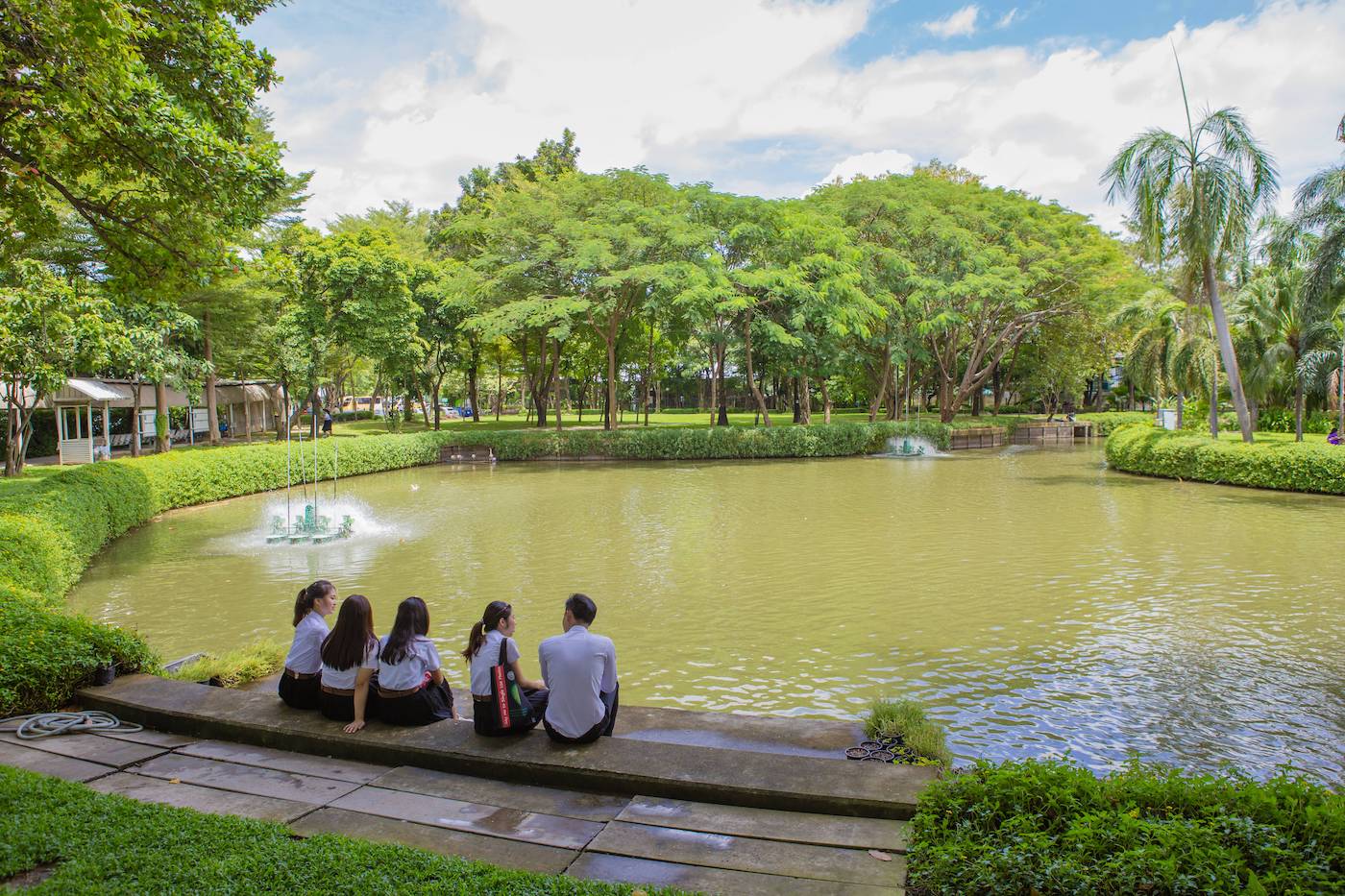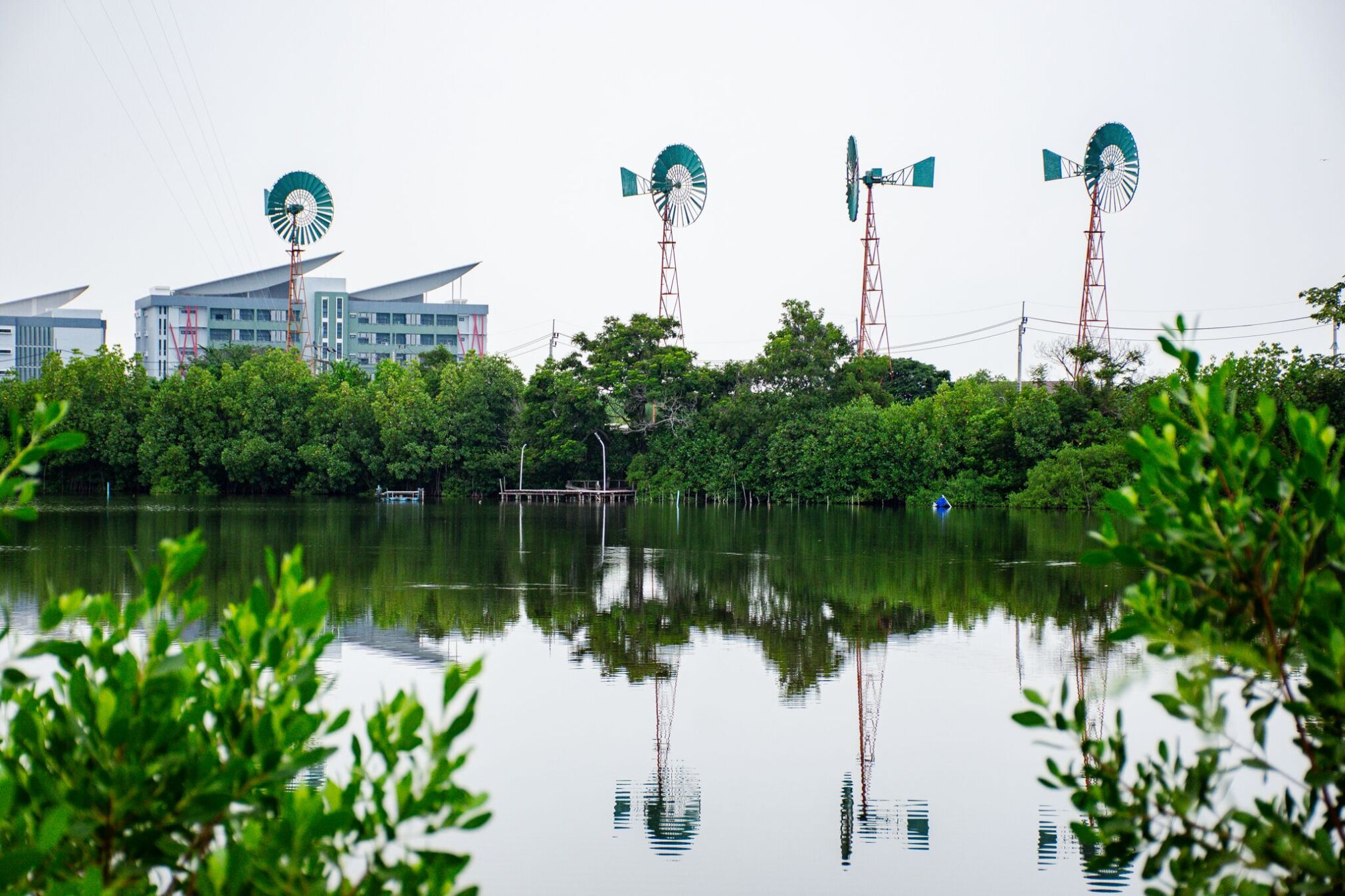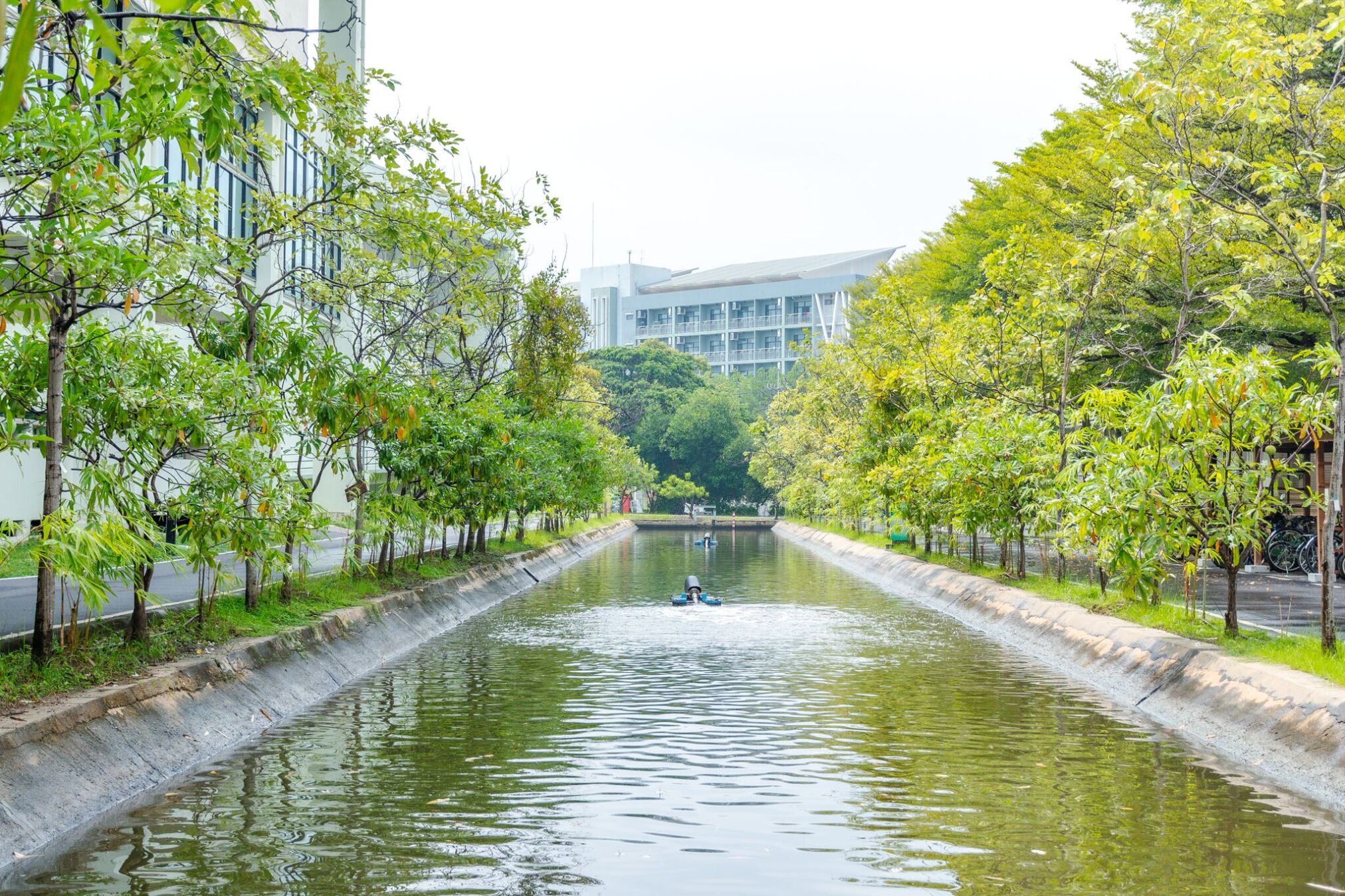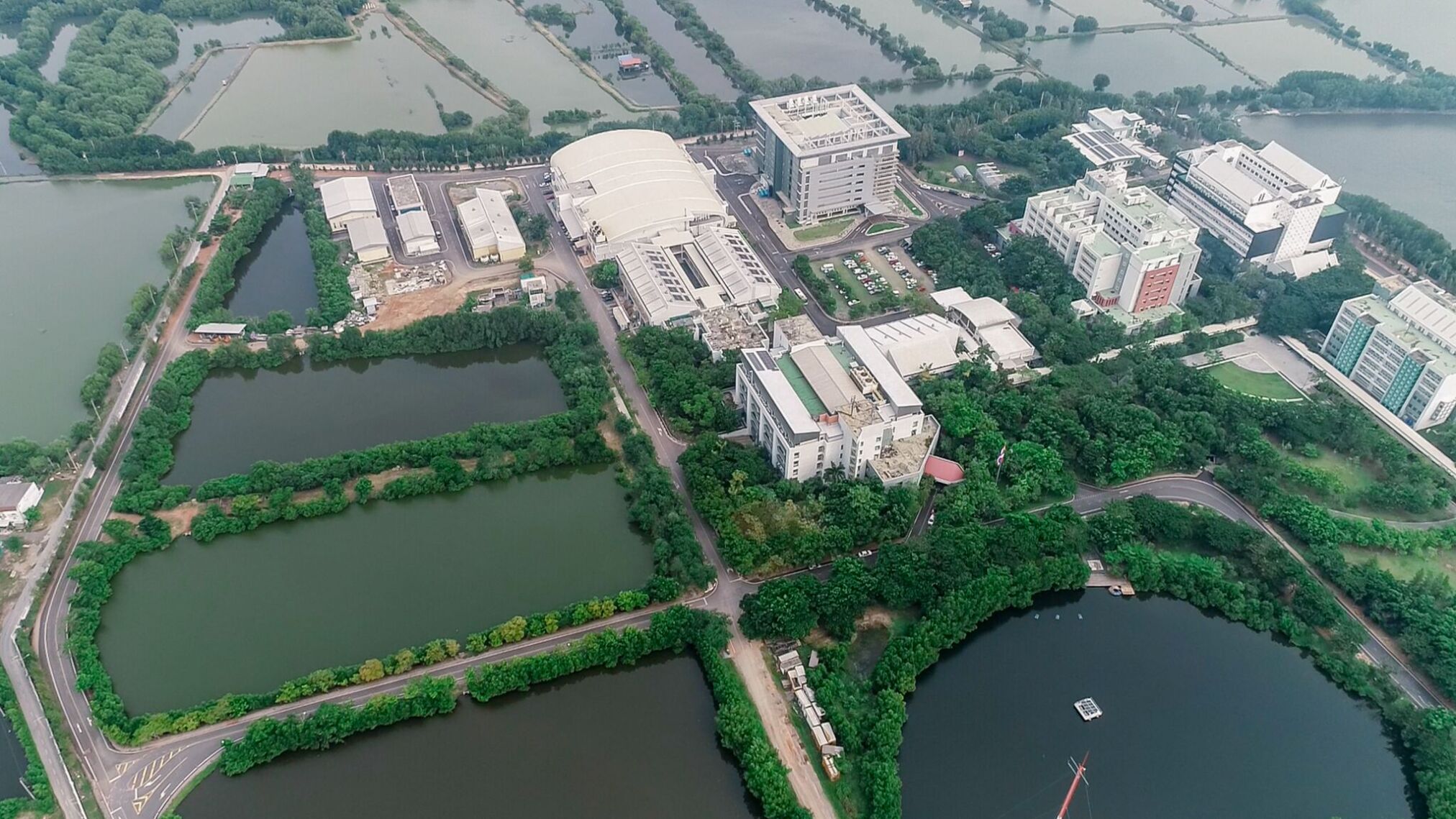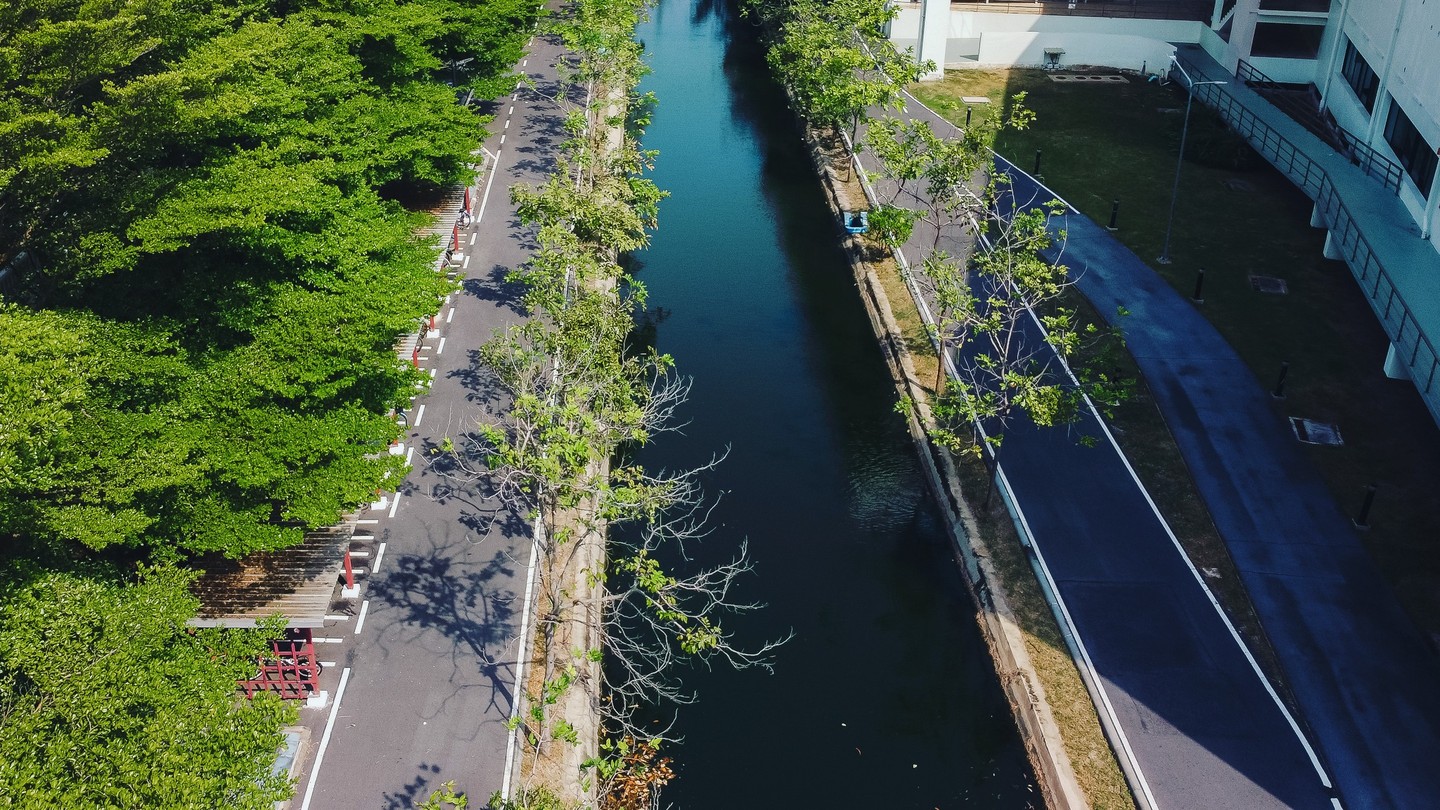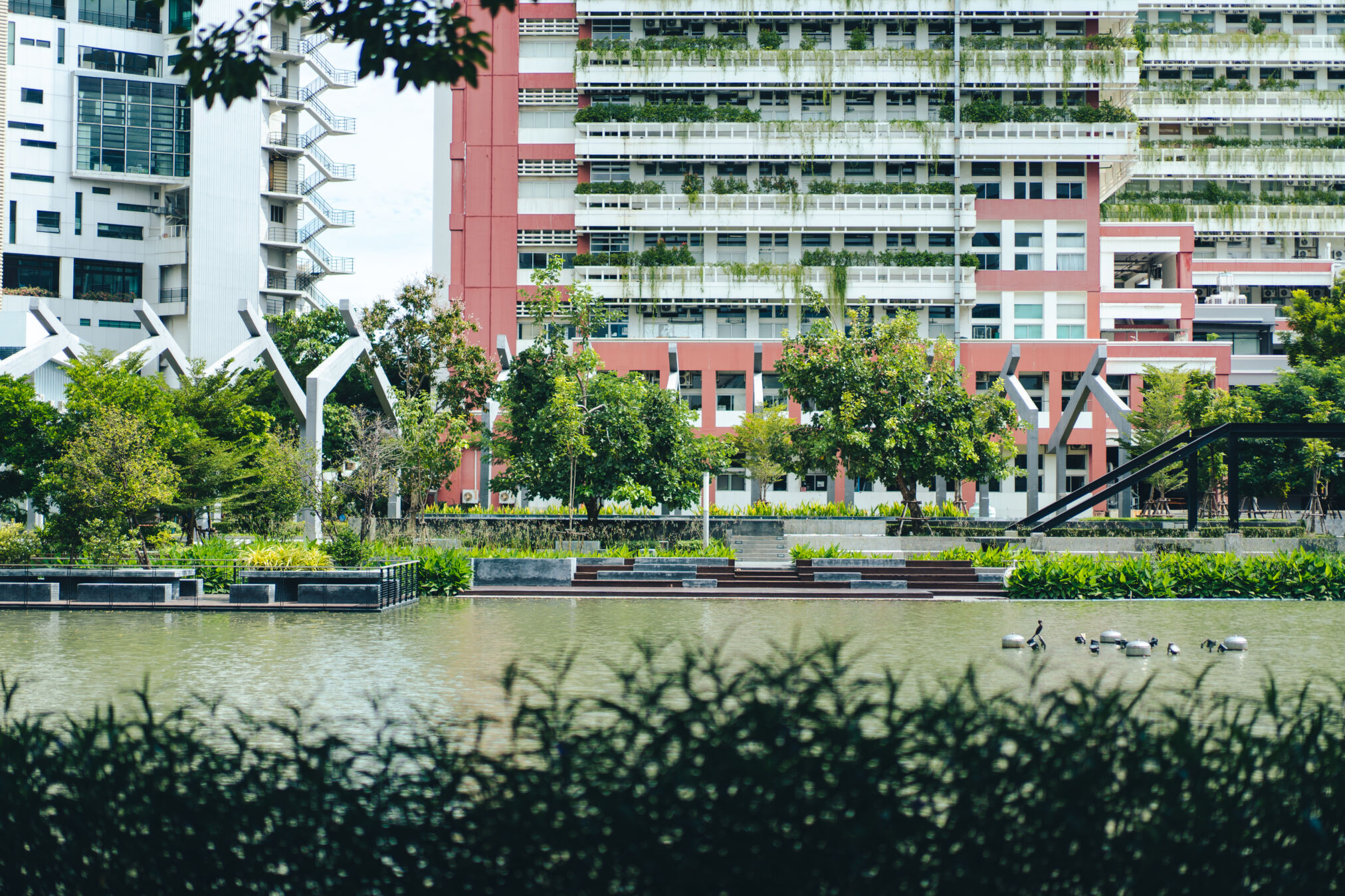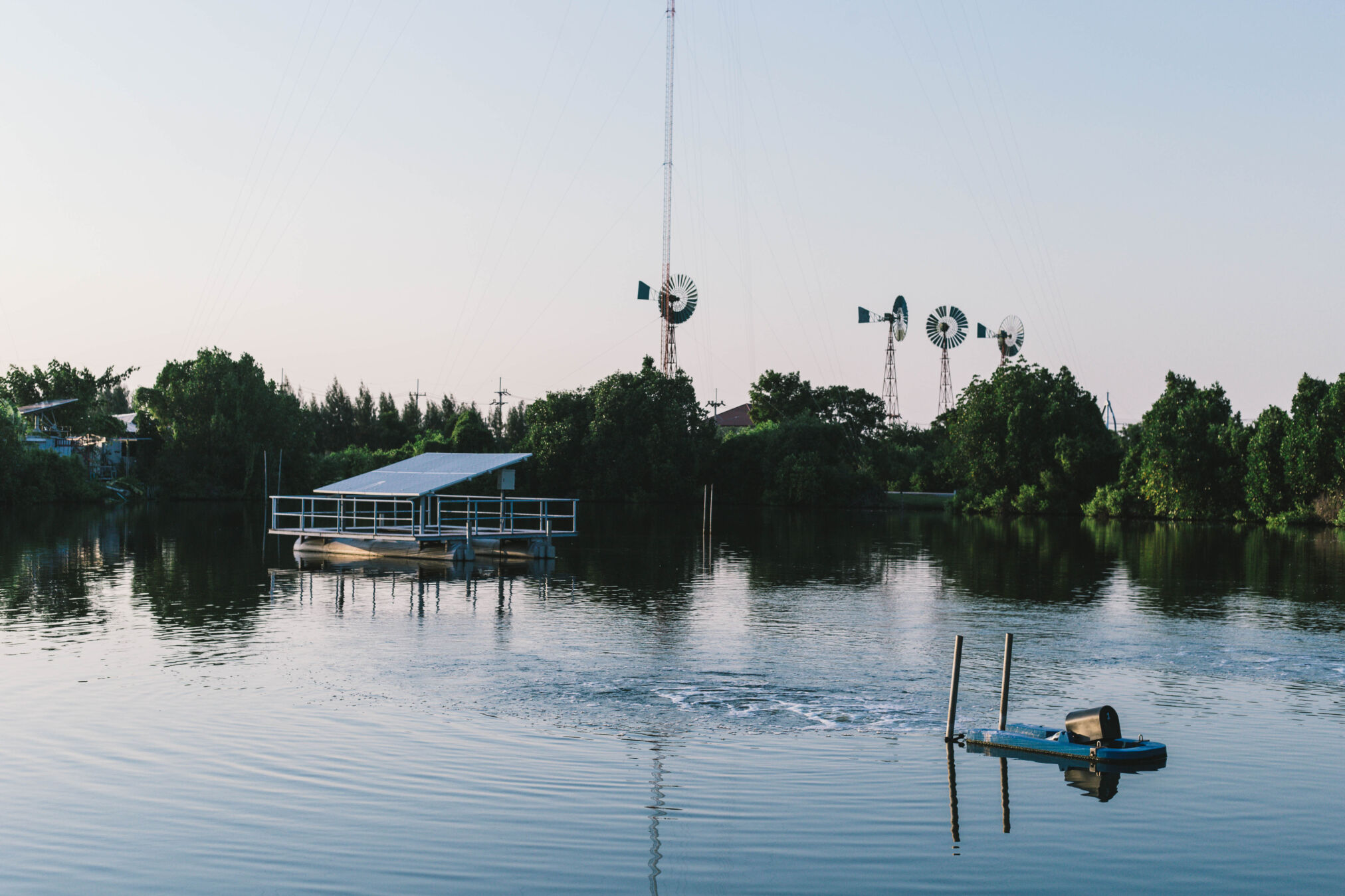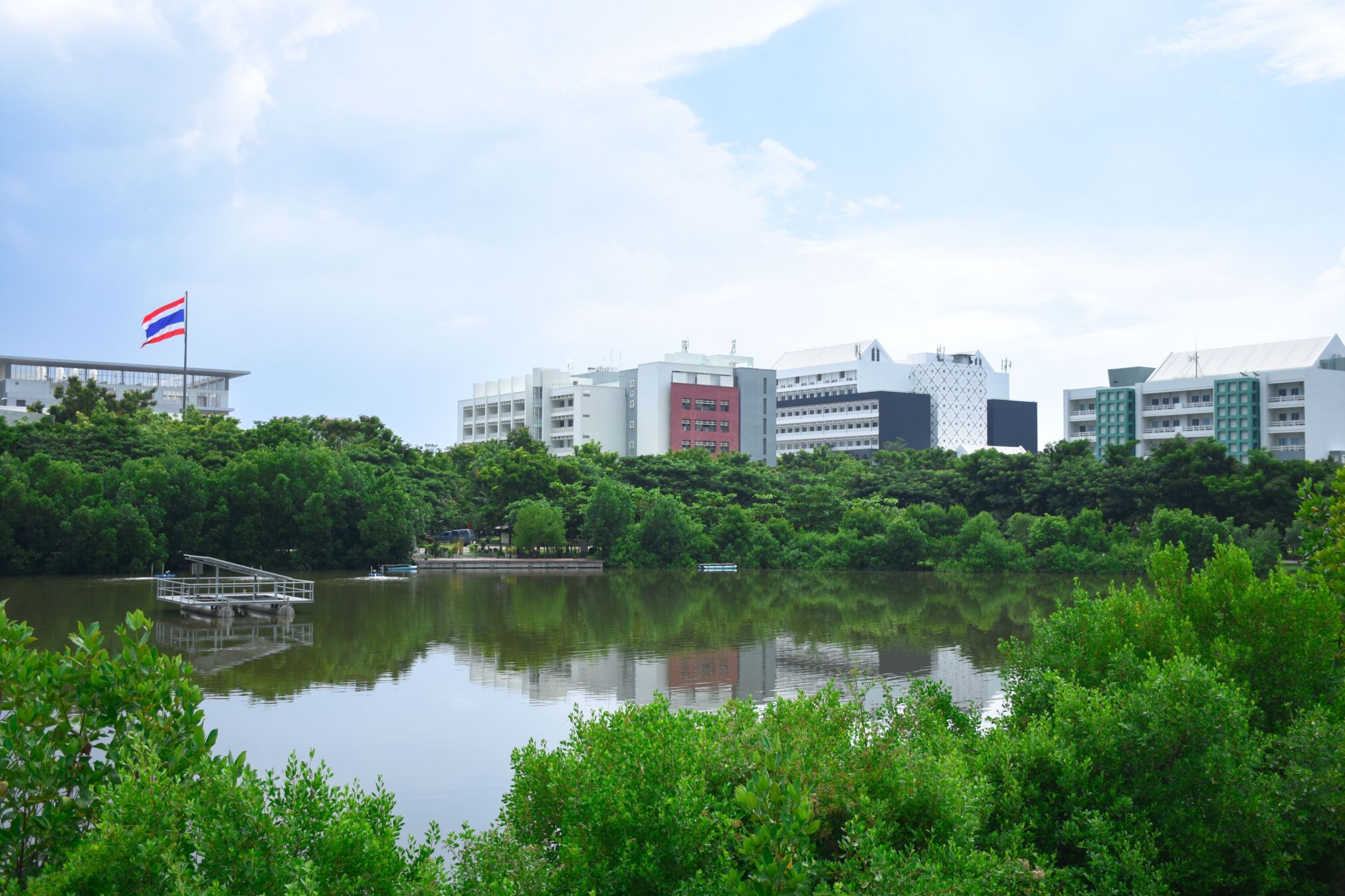The table below highlights the results of a 2019 survey on land use across KMUTT campuses, focusing on forest vegetation, non-retentive surfaces, and planted vegetation. The data shows that the Bangkhuntien campus had the highest percentage of area dedicated to mangrove forest, emphasizing KMUTT’s commitment to preserving this unique ecosystem.
Looking ahead to 2025, KMUTT has ambitious plans to expand forest and planted vegetation areas across all campuses. This initiative aims to increase green coverage, supporting biodiversity, enhancing air quality, and contributing to climate resilience. The 2025 expansion marks a significant step forward, positioning KMUTT as a leader in sustainable campus development and ecological conservation.
Through these ongoing efforts, KMUTT continues to prioritize environmental stewardship, setting a powerful example in campus sustainability and showcasing the role that green spaces play in creating a healthier, more sustainable future.
Water absorption areas
KMUTT BANGMOD
KMUTT BANGKHUNTIEN
KMUTT RATCHABURI
KMUTT KNOWLEDGE EXCHANGE
TOTAL
